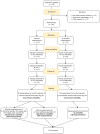Clinical evaluation of AI-assisted muscle ultrasound for monitoring muscle wasting in ICU patients
- PMID: 38926427
- PMCID: PMC11208490
- DOI: 10.1038/s41598-024-64564-w
Clinical evaluation of AI-assisted muscle ultrasound for monitoring muscle wasting in ICU patients
Abstract
Muscle ultrasound has been shown to be a valid and safe imaging modality to assess muscle wasting in critically ill patients in the intensive care unit (ICU). This typically involves manual delineation to measure the rectus femoris cross-sectional area (RFCSA), which is a subjective, time-consuming, and laborious task that requires significant expertise. We aimed to develop and evaluate an AI tool that performs automated recognition and measurement of RFCSA to support non-expert operators in measurement of the RFCSA using muscle ultrasound. Twenty patients were recruited between Feb 2023 and July 2023 and were randomized sequentially to operators using AI (n = 10) or non-AI (n = 10). Muscle loss during ICU stay was similar for both methods: 26 ± 15% for AI and 23 ± 11% for the non-AI, respectively (p = 0.13). In total 59 ultrasound examinations were carried out (30 without AI and 29 with AI). When assisted by our AI tool, the operators showed less variability between measurements with higher intraclass correlation coefficients (ICCs 0.999 95% CI 0.998-0.999 vs. 0.982 95% CI 0.962-0.993) and lower Bland Altman limits of agreement (± 1.9% vs. ± 6.6%) compared to not using the AI tool. The time spent on scans reduced significantly from a median of 19.6 min (IQR 16.9-21.7) to 9.4 min (IQR 7.2-11.7) compared to when using the AI tool (p < 0.001). AI-assisted muscle ultrasound removes the need for manual tracing, increases reproducibility and saves time. This system may aid monitoring muscle size in ICU patients assisting rehabilitation programmes.
Keywords: Artificial intelligence; Intensive care unit; Muscle ultrasound; Muscle wasting; Real-time.
© 2024. The Author(s).
Conflict of interest statement
The authors declare no competing interests.
Figures




References
Publication types
MeSH terms
Grants and funding
LinkOut - more resources
Full Text Sources

